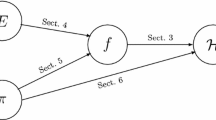Abstract
The recently started SHA-3 competition in order to find a new secure hash standard and thus a replacement for SHA-1/SHA-2 has attracted a lot of interest in the academic world as well as in industry. There are 51 round one candidates building on sometimes very different principles.
In this paper, we show how to attack two of the 51 round one hash functions. The attacks have in common that they exploit structural weaknesses in the design of the hash function and are independent of the underlying compression function. First, we present a preimage attack on the hash function Blender-n. It has a complexity of about n·2n/2 and negligible memory requirements. Secondly, we show practical collision and preimage attacks on DCH-n. To be more precise, we can trivially construct a (28 + 2)-block collision for DCH-n and a 1297-block preimage with only 521 compression function evaluations. The attacks on both hash functions work for all output sizes and render the hash functions broken.
Preview
Unable to display preview. Download preview PDF.
Similar content being viewed by others
References
Wang, X., Yin, Y.L., Yu, H.: Finding Collisions in the Full SHA-1. In: Shoup, V. (ed.) CRYPTO 2005. LNCS, vol. 3621, pp. 17–36. Springer, Heidelberg (2005)
Wang, X., Yu, H.: How to Break MD5 and Other Hash Functions. In: Cramer, R. (ed.) EUROCRYPT 2005. LNCS, vol. 3494, pp. 19–35. Springer, Heidelberg (2005)
National Institute of Standards and Technology: FIPS 180-3, Secure Hash Standard, Federal Information Processing Standard (FIPS), Publication 180-3. Federal Information Processing Standard (October 2008), http://csrc.nist.gov/publications/PubsFIPS.html
National Institute of Standards and Technology: Announcing Request for Candidate Algorithm Nominations for a New Cryptographic Hash Algorithm (SHA-3) Family. Federal Register Notice (November 2007), http://csrc.nist.gov
Damgård, I.: A design principle for hash functions. In: Brassard, G. (ed.) CRYPTO 1989. LNCS, vol. 435, pp. 416–427. Springer, Heidelberg (1990)
Merkle, R.C.: One way hash functions and DES. In: Brassard, G. (ed.) CRYPTO 1989. LNCS, vol. 435, pp. 428–446. Springer, Heidelberg (1990)
Bertoni, G., Daemen, J., Assche, G.V., Peeters, M.: Sponge Functions. In: ECRYPT Hash Workshop 2007, Barcelona, May 24-25 (2007)
Biham, E., Dunkelman, O.: A Framework for Iterative Hash Functions - HAIFA. Cryptology ePrint Archive, Report 2007/278 (2007), http://eprint.iacr.org
Lucks, S.: A Failure-Friendly Design Principle for Hash Functions. In: Roy, B. (ed.) ASIACRYPT 2005. LNCS, vol. 3788, pp. 474–494. Springer, Heidelberg (2005)
Bradbury, C.: BLENDER: A Proposed New Family of Cryptographic Hash Algorithms. Submission to NIST (2008), http://ehash.iaik.tugraz.at/uploads/5/5e/Blender.pdf
Wilson, D.A.: The DCH Hash Function. Submission to NIST (2008), http://web.mit.edu/dwilson/www/hash/dch/Supporting_Documentation/dch.pdf
Newbold, C.: Observations and Attacks on the SHA-3 Candidate Blender (2008), http://ehash.iaik.tugraz.at/uploads/2/20/Observations_on_Blender.pdf
Klima, V.: A near-collision attack on Blender-256 (2008), http://cryptography.hyperlink.cz/BMW/near_collision_blender.pdf
Klima, V.: Huge Multicollisions and Multipreimages of Hash Functions BLENDER-n. Cryptology ePrint Archive, Report 2009/006 (2009), http://eprint.iacr.org/
Liangyu, X., Ji, L.: Semi-free start collision attack on Blender. Cryptology ePrint Archive, Report 2008/532 (2008), http://eprint.iacr.org/
Ferguson, N., Lucks, S.: Attacks on AURORA-512 and the Double-Mix Merkle-Damgaard Transform. Cryptology ePrint Archive, Report 2009/113 (2009), http://eprint.iacr.org/
Sasaki, Y.: A 2nd-Preimage Attack on AURORA-512. Cryptology ePrint Archive, Report 2009/112 (2009), http://eprint.iacr.org/
Sasaki, Y.: A Collision Attack on AURORA-512. Cryptology ePrint Archive, Report 2009/106 (2009), http://eprint.iacr.org/
Mendel, F., Pramstaller, N., Rechberger, C., Kontak, M., Szmidt, J.: Cryptanalysis of the GOST Hash Function. In: Wagner, D. (ed.) CRYPTO 2008. LNCS, vol. 5157, pp. 162–178. Springer, Heidelberg (2008)
Gauravaram, P., Kelsey, J.: Linear-XOR and Additive Checksums Don’t Protect Damgård-Merkle Hashes from Generic Attacks. In: Malkin, T.G. (ed.) CT-RSA 2008. LNCS, vol. 4964, pp. 36–51. Springer, Heidelberg (2008)
Joux, A.: Multicollisions in Iterated Hash Functions. Application to Cascaded Constructions. In: Franklin, M. (ed.) CRYPTO 2004. LNCS, vol. 3152, pp. 306–316. Springer, Heidelberg (2004)
Quisquater, J.J., Delescaille, J.P.: How Easy is Collision Search. New Results and Applications to DES. In: Brassard, G. (ed.) CRYPTO 1989. LNCS, vol. 435, pp. 408–413. Springer, Heidelberg (1990)
Preneel, B., Govaerts, R., Vandewalle, J.: Hash functions based on block ciphers: A synthetic approach. In: Stinson, D.R. (ed.) CRYPTO 1993. LNCS, vol. 773, pp. 368–378. Springer, Heidelberg (1994)
Khovratovich, D., Nikolic, I.: Cryptanalysis of DCH-n (2008), http://lj.streamclub.ru/papers/hash/dch.pdf
Lamberger, M., Pramstaller, N., Rechberger, C., Rijmen, V.: Analysis of the Hash Function Design Strategy Called SMASH. IEEE Transactions on Information Theory 54(8), 3647–3655 (2008)
Andreeva, E., Bouillaguet, C., Fouque, P.A., Hoch, J.J., Kelsey, J., Shamir, A., Zimmer, S.: Second preimage attacks on dithered hash functions. In: Smart, N.P. (ed.) EUROCRYPT 2008. LNCS, vol. 4965, pp. 270–288. Springer, Heidelberg (2008)
Lidl, R., Niederreiter, H.: Finite fields, 2nd edn. Encyclopedia of Mathematics and its Applications, vol. 20. Cambridge University Press, Cambridge (1997); With a foreword by P. M. Cohn
Author information
Authors and Affiliations
Editor information
Editors and Affiliations
Rights and permissions
Copyright information
© 2009 Springer-Verlag Berlin Heidelberg
About this paper
Cite this paper
Lamberger, M., Mendel, F. (2009). Structural Attacks on Two SHA-3 Candidates: Blender-n and DCH-n . In: Samarati, P., Yung, M., Martinelli, F., Ardagna, C.A. (eds) Information Security. ISC 2009. Lecture Notes in Computer Science, vol 5735. Springer, Berlin, Heidelberg. https://doi.org/10.1007/978-3-642-04474-8_6
Download citation
DOI: https://doi.org/10.1007/978-3-642-04474-8_6
Publisher Name: Springer, Berlin, Heidelberg
Print ISBN: 978-3-642-04473-1
Online ISBN: 978-3-642-04474-8
eBook Packages: Computer ScienceComputer Science (R0)




